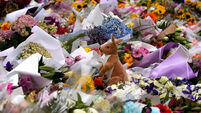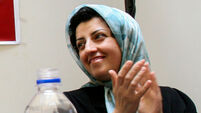Fears for pirate hostages after US raid
Pirate hostages were feared at risk of a violent backlash from their captors today in the wake of the successful freeing of an American merchant captain.
Three of the Somali abductors holding captain Richard Phillips were shot dead by US Navy special forces, known as Seals, as they held guns to his head adrift in a small lifeboat.
The operation was a victory for the world’s most powerful military but angry pirates vowed today to retaliate.
Around 230 foreign sailors are still held hostage in more than a dozen ships anchored off the coast of lawless Somalia.
“From now on, if we capture foreign ships and their respective countries try to attack us, we will kill them (the hostages),” Jamac Habeb, a 30-year-old pirate, said one of Somalia’s piracy hubs, Eyl. “(US forces have) become our number one enemy.”
News of Capt. Phillips’ rescue caused his crew in Kenya to break into wild cheers and brought tears to the eyes of those in his hometown of Underhill, Vermont, half a world away from the Indian Ocean drama.
President Barack Obama said he was pleased with the rescue, but added the United States still needed help from other countries to deal with piracy and to hold pirates accountable.
The end to a five-day standoff came yesterday in a daring night-time assault in choppy seas after pirates had agreed to let the cruiser USS Bainbridge tow their powerless lifeboat out of rough water.
Vice Admiral Bill Gortney said Capt. Phillips, 53, was tied up and in “imminent danger” of being killed because a pirate on the lifeboat held an AK-47 assault rifle to the back of his head.
At that, the commander of Bainbridge made the split-second decision to order Navy snipers to shoot at the lifeboat, about 25-30 yards away, taking aim at the pirates’ heads and shoulders.
A fourth pirate surrendered after boarding the Bainbridge earlier in the day and could face life in a US prison. He had been seeking medical attention for a wound to his hand and was negotiating with US officials on conditions for Capt. Phillips’ release, military officials said.
In a move that surprised the pirates, the US-flagged Maersk Alabama put up a fight last Wednesday when they boarded it. Until then Somali pirates had become used to encountering no resistance once they attacked a ship in search of million-dollar ransoms.
Yet yesterday’s blow to their lucrative activities is unlikely to stop pirates from threatening one of the world’s busiest shipping lanes, simply because of the size of the vast area stretching from the Gulf of Aden and the coast of Somalia.
In fact, some say it may provoke retaliatory attacks against other hostages.
“This could escalate violence in this part of the world, no question about it,” said Admiral Gortney, the commander of US Naval Forces Central Command.
A Somali pirate agreed.
“Every country will be treated the way it treats us. In the future, America will be the one mourning and crying,” Abdullahi Lami, one of the pirates holding a Greek ship anchored in the Somali town of Gaan said. “We will retaliate (for) the killings of our men.”
On Friday French navy commandos stormed a pirate-held yacht, the Tanit, in a shoot out at sea that killed two pirates and one French hostage and freed four French citizens.
The drama surrounding Capt. Phillips and his ship – the first American taken hostage in the Gulf of Aden – made headlines around the world, pitting a lone captain held by pirates on a tiny, drifting boat surrounded by US warships.
The pirates still hold about a dozen ships with more than 200 crew members, according to the piracy watchdog International Maritime Bureau. Hostages are from Bulgaria, China, Germany, Indonesia, Italy, the Philippines, Russia, Taiwan, Tuvalu and Ukraine, among other countries.
Vilma de Guzman, whose husband is one of 23 Filipino sailors held hostage since November 10 on chemical tanker MT Stolt Strength, feared Capt. Phillips’ rescue may endanger the lives of other hostages.
“The pirates might vent their anger on them,” she said. “Those released are lucky, but what about those who remain captive?”
She also criticised world media for focusing so much on the US captain but giving little attention to other hostages.
Capt. Phillips was not hurt in the rescue and the US Navy’s 5th Fleet said he was resting comfortably on a warship after having medical checks.
With news of the rescue, Capt. Phillips’ 17,000-ton ship, which docked with his 19 crew members on Saturday in Mombasa, Kenya, erupted into wild cheers. Some waved an American flag and one fired a bright red flare in celebration.
The ship had been carrying food aid bound for Rwanda, Somalia and Uganda when the ordeal began on Wednesday hundreds of miles off Somalia’s eastern coast. As the pirates clambered aboard and shot in the air, Capt. Phillips told his crew to lock themselves in a cabin and surrendered himself to safeguard his men.
He was then taken hostage in an enclosed lifeboat that was soon shadowed by three US warships and a helicopter.
The surviving fourth pirate was in military custody, but an FBI spokesman said that would change as the situation became “more of a criminal issue than a military issue.”
Kenyan Foreign Minister Moses Wetangula said his country had not received any request from the United States to try the captured pirate, but would “consider it on its own merit.”
When the United States captured pirates in 2006, Kenya agreed to try them. Ten pirates were convicted and are serving prison sentences of seven years each.













